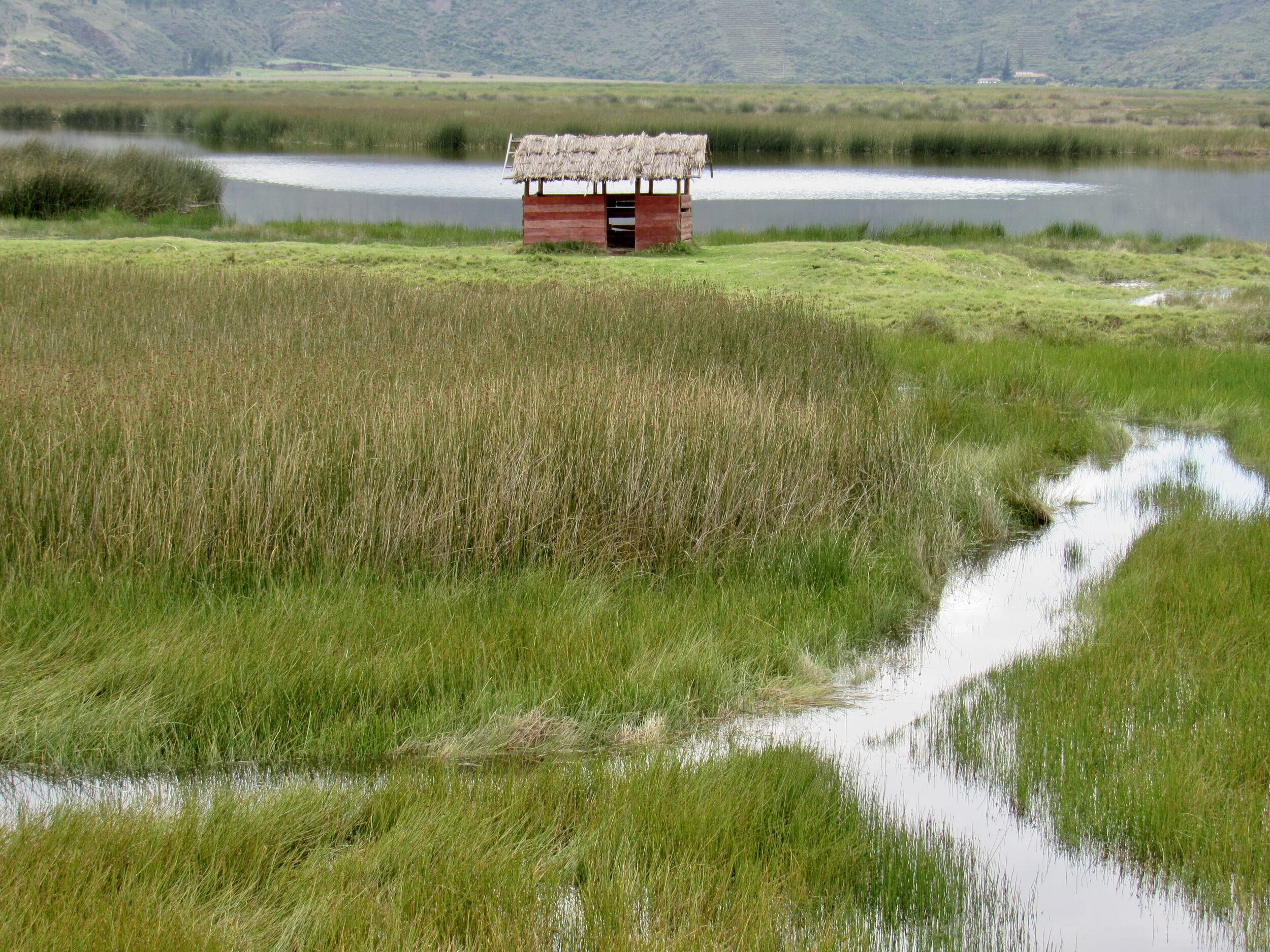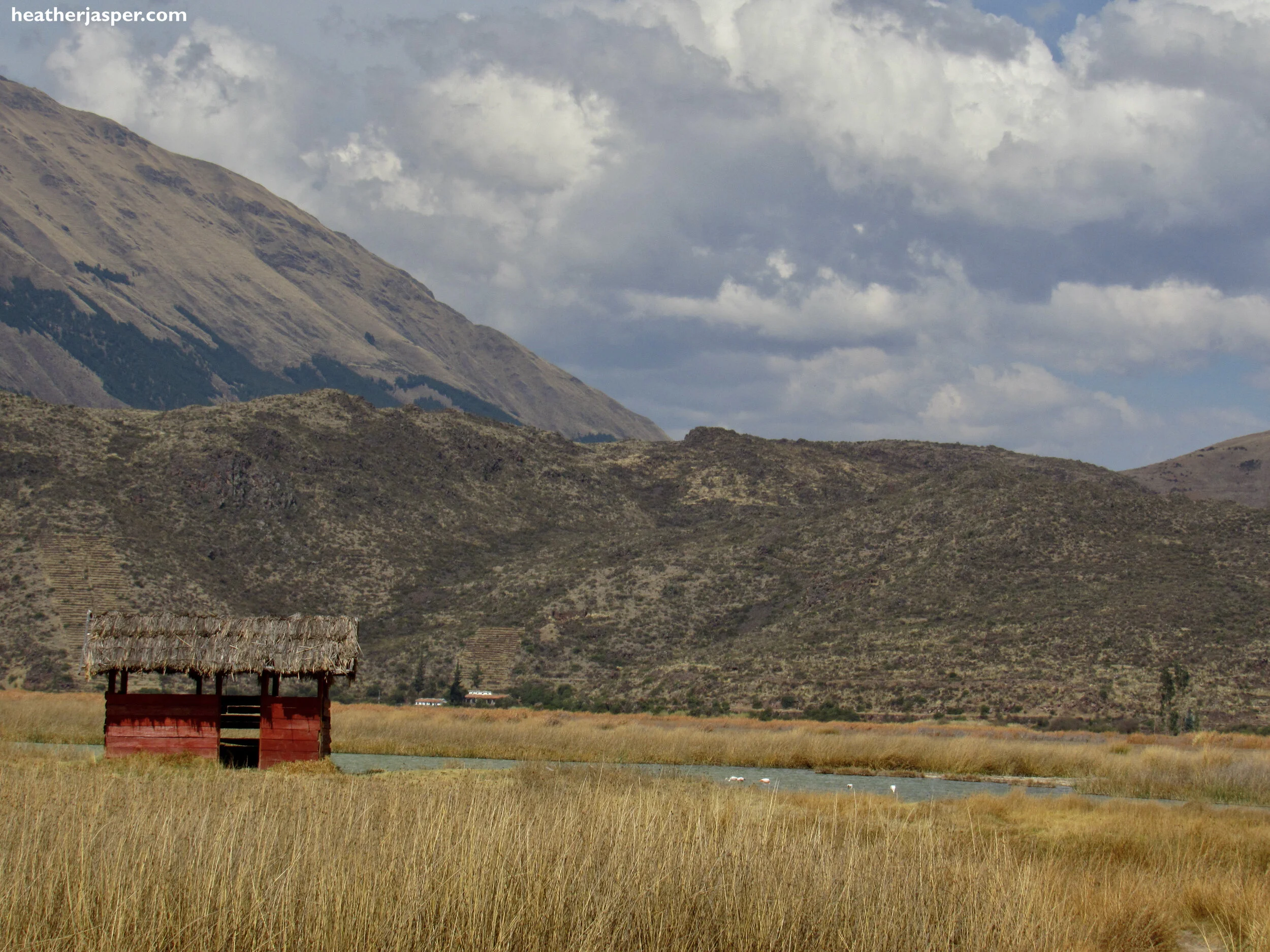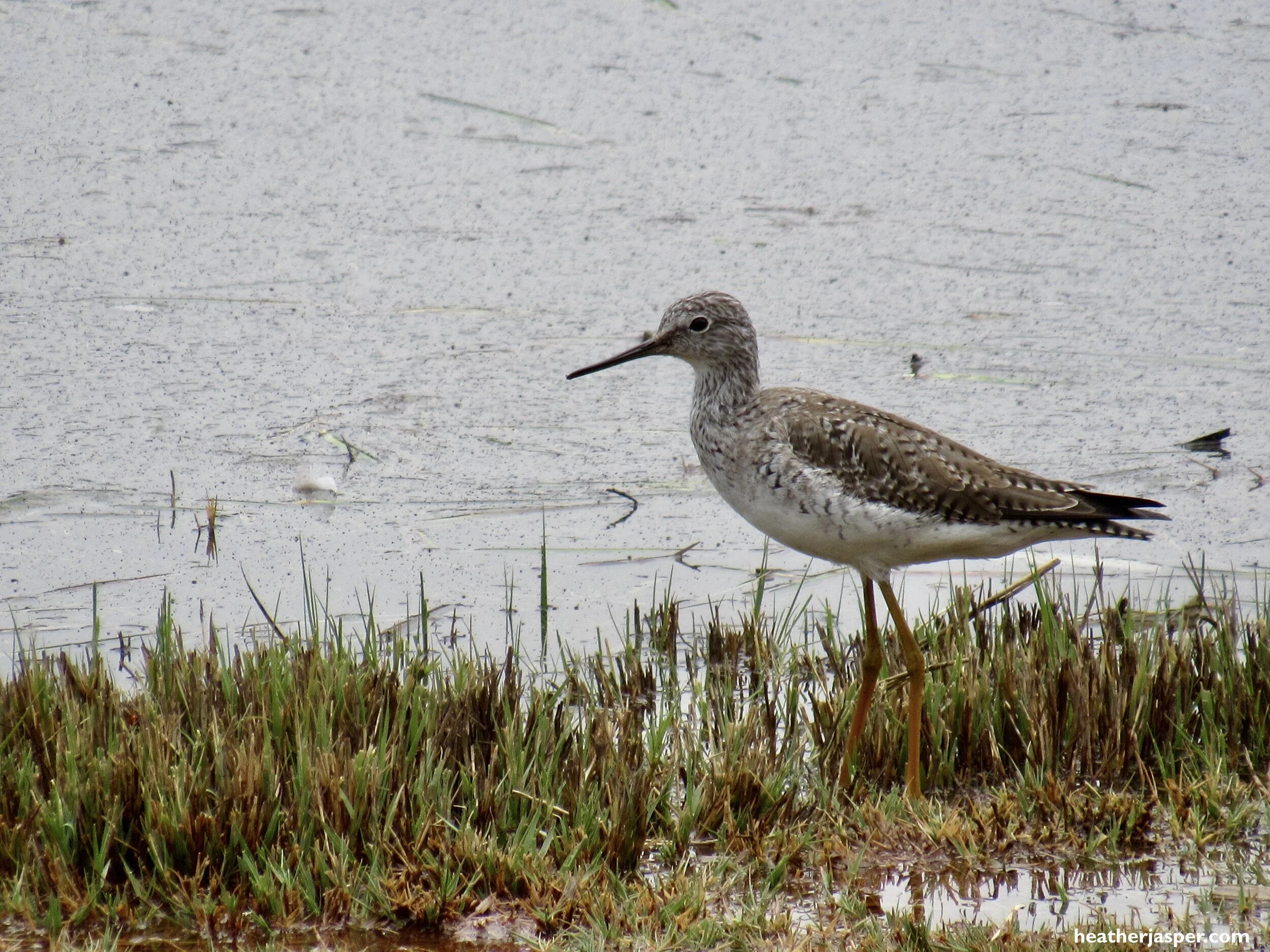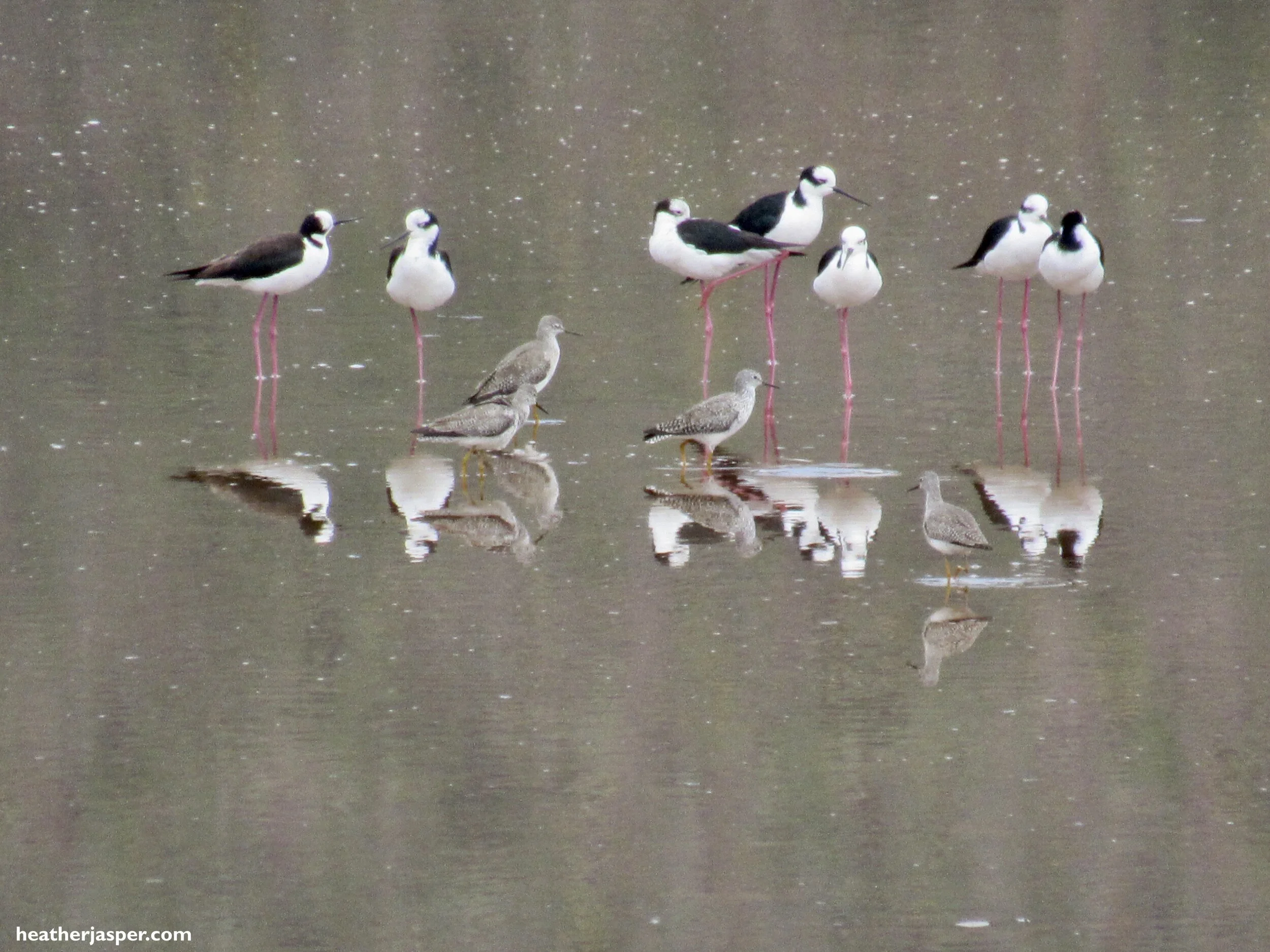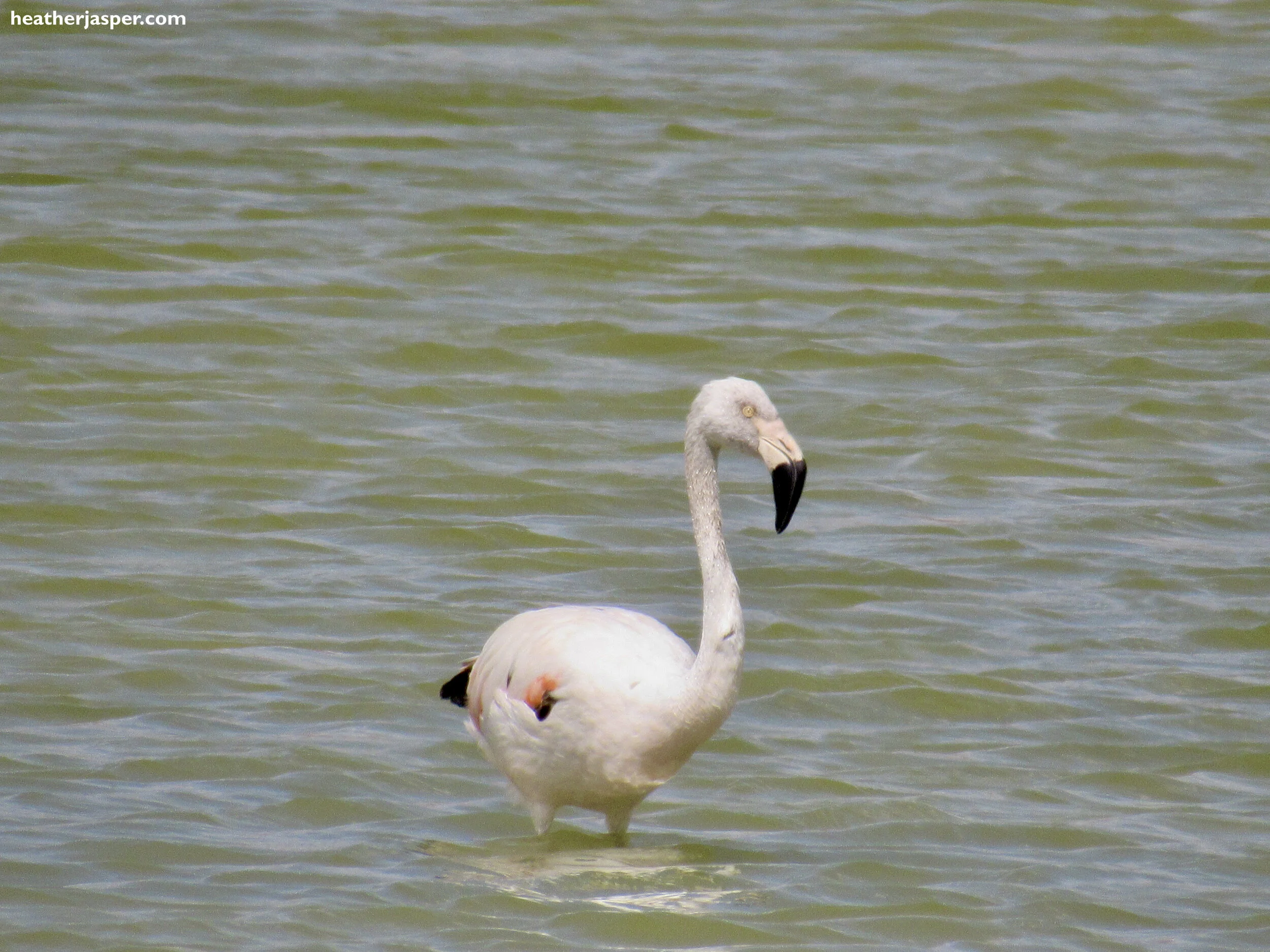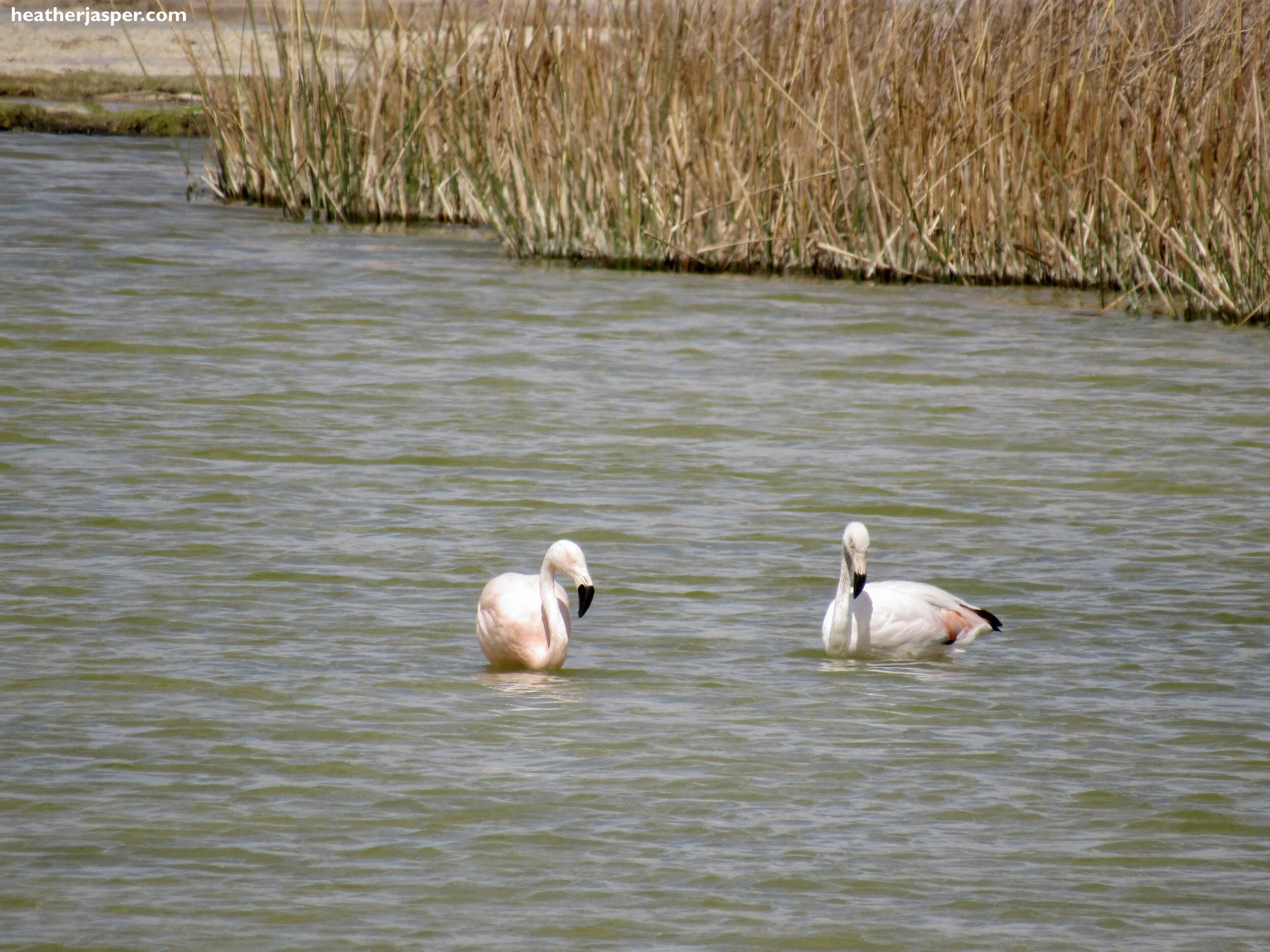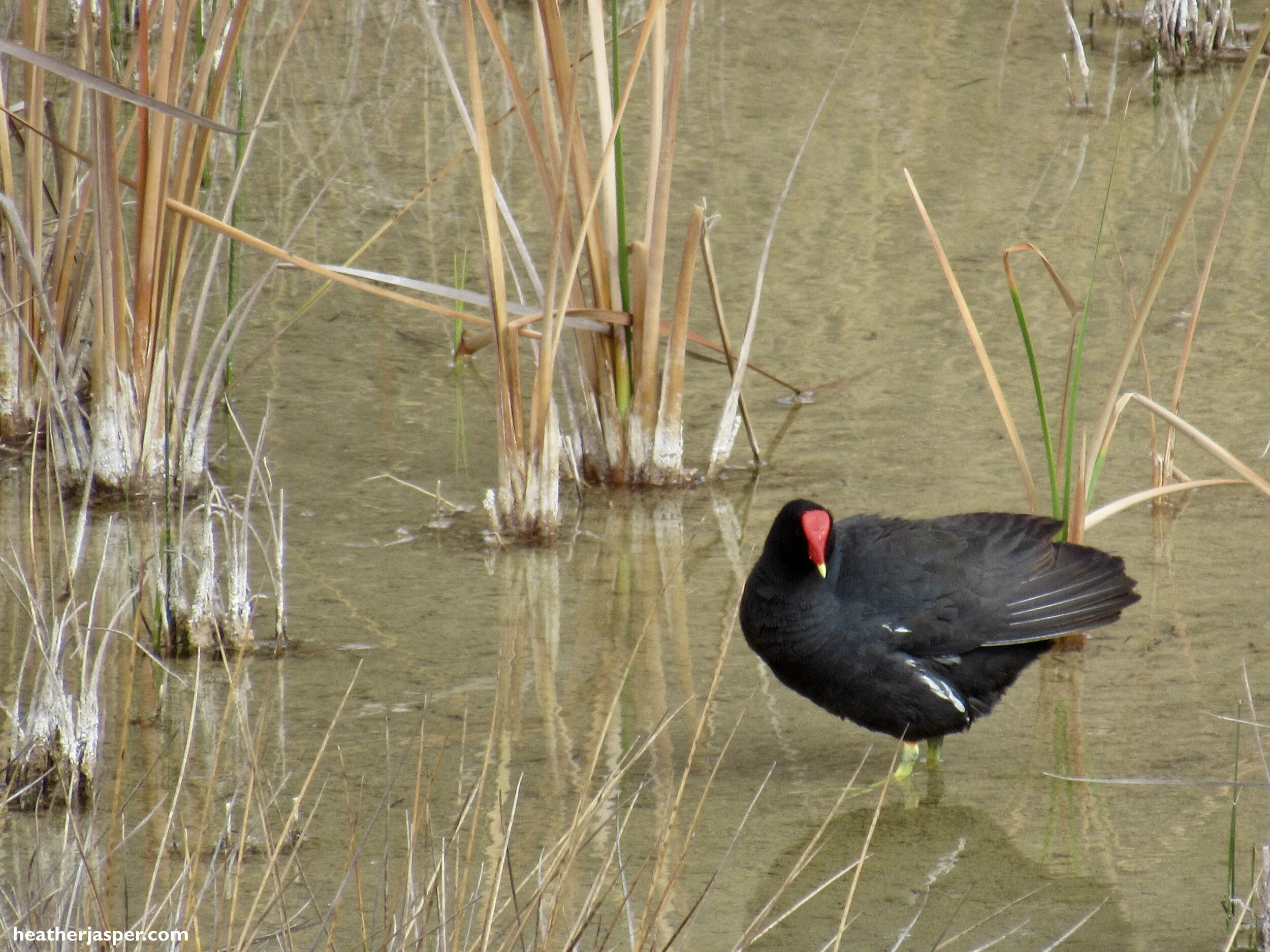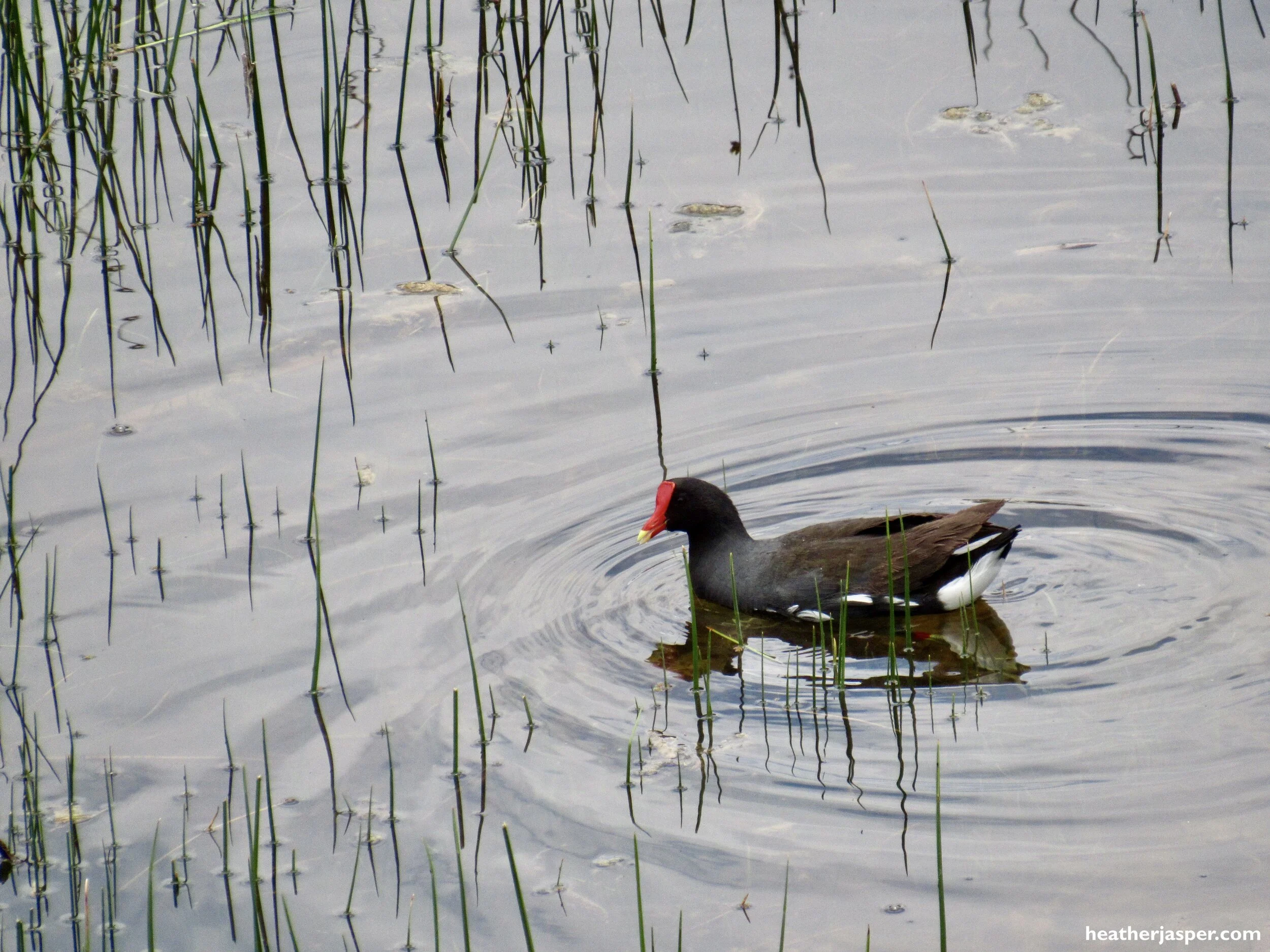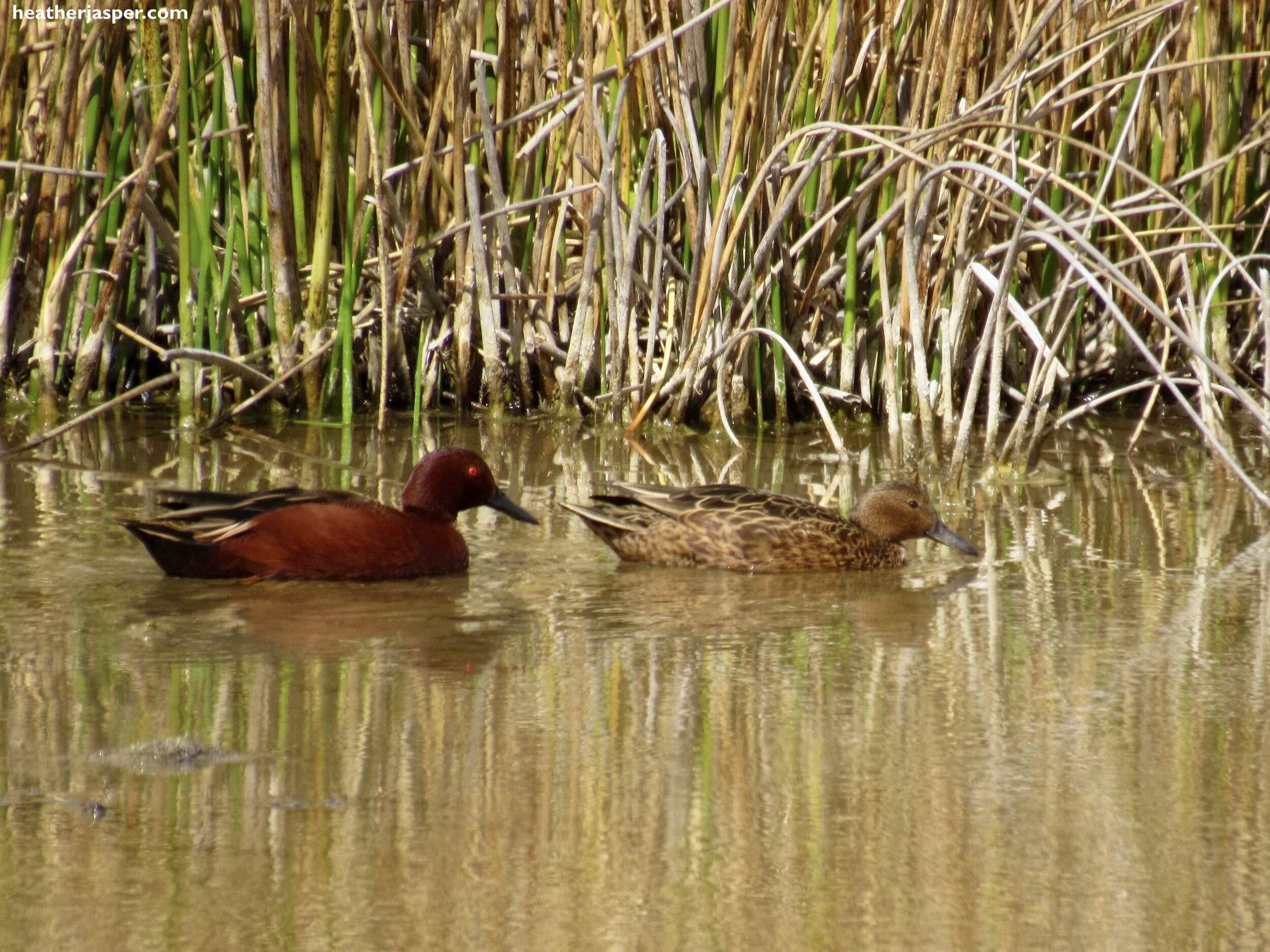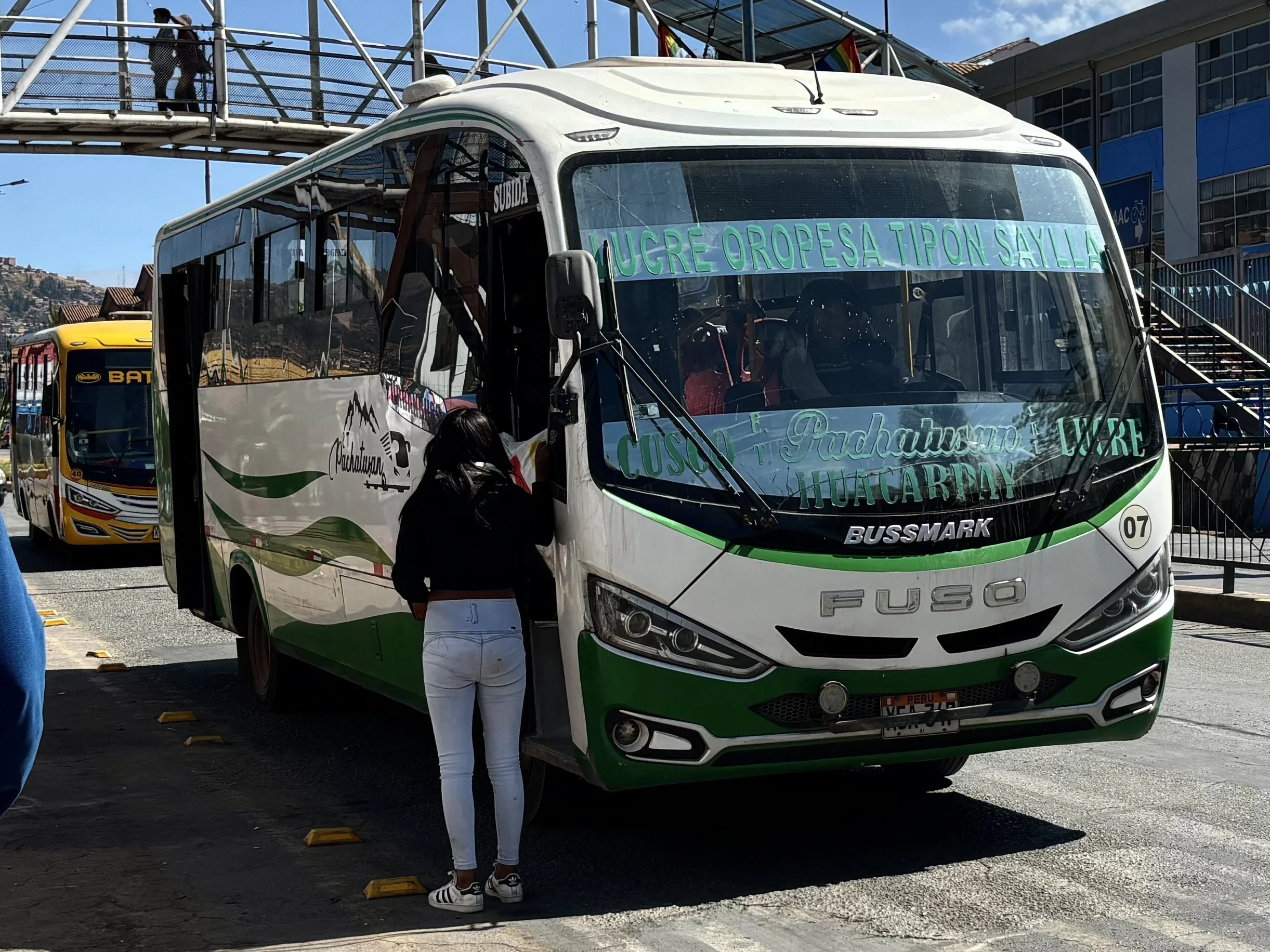Huacarpay Marshes
In the rainy season, the paths to the bird blind are underwater.
In the dry season, the water is much farther away.
Greater Yellowlegs
Tringa melanoleuca, locally called Piquicuy.
Black-Necked Stilt
Himantopus mexicanus, locally called Siguenela



Yellow-Billed Pintail
Anas georgica, locally called Chumpi Pato
Heron and Gallinule
Little Blue Heron, garza azul
White Tufted Grebe
Podiceps rolland, locally called Zambullidor Pimpollo
Cinnamon Teal
Anas cyanoptera, locally called Pucca Pato
Andean Duck
Oxyura ferruginea, also locally called Pucca Pato
Puna Ibis
Plegadis ridgwayi, locally called Puna Ibis
How to get to Huacarpay?
The Huacarpay Marshes are only about an hour from Cusco. Get off at the corner of the main road right where the bus turns to go to Lucre. You will walk around the marshes, next to the road, towards Lucre. If you stay on the bus, you can start in Lucre and walk around the marshes back towards the main road.
Pachatusan Bus
Take the green and white Pachatusan bus that says Huacarpay & Lucre - not all busses go as far as Lucre. You can get the bus anywhere along Avenida la Cultura.

